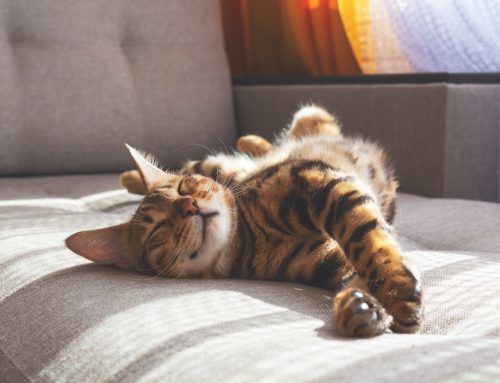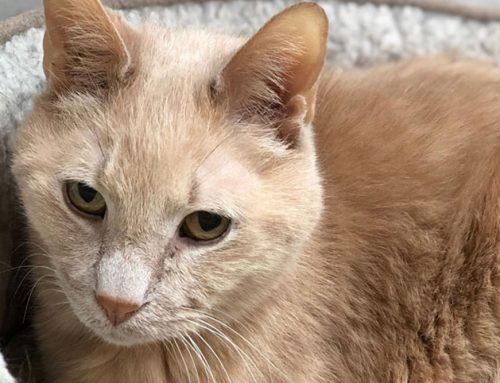Feline arthritis commonly affects cats—studies suggest that more than 90% of cats older than age 12 show arthritis signs in at least one joint. This chronic, progressive disease is characterized by the gradual loss of cartilage, which is the smooth tissue in joints that acts as a cushion between bones. Over time, this degradation leads to painful bone-on-bone contact, causing discomfort, stiffness, and reduced mobility. Arthritis is more common in older cats, but also affects younger cats. Arthritis can significantly impact your cat’s quality of life, and early detection and intervention can slow disease progression. Our Twin Maples Veterinary Hospital team offers this feline arthritis guide, so you can learn more about this common, painful joint condition.
Recognizing feline arthritis
Cats are masters at hiding pain and illness, and this trait, an evolutionary survival mechanism, often makes feline arthritis signs difficult to recognise until the disease has advanced and your cat is in significant discomfort. The following subtle changes in your cat’s behavior can indicate arthritis:
- Decreased mobility — Your once agile cat who is suffering with arthritis may seem less enthusiastic about jumping on countertops or furniture, and may start avoiding stairs. They will often seem stiff, especially after long rest periods.
- Changes in grooming habits — Cats are meticulous groomers, but arthritis can make the simple act of cleaning themselves painful and challenging. Look for signs of over-grooming or under-grooming, both of which indicate discomfort.
- Reduced activity — Arthritic cats may show a marked reduction in activity level. If your cat is sleeping more, less interested in play, or no longer engaging in activities they once enjoyed, they may be painful because of arthritis.
- Changes in litter box behavior — Changes in litter box behavior can also be a telltale arthritis sign. An arthritic cat may find climbing in and out of a high-sided litter box too difficult, and they may start having accidents outside the box.
- Increased agitation — Cats suffering from arthritis pain may become irritable, withdrawn, or aggressive, particularly when touched in certain areas.
Knowing what to look for and taking action early can make all the difference when managing feline arthritis. So, keep a close eye on your cat, and contact our Twin Maples Veterinary Hospital team as soon as you notice any concerning behavior changes.
Diagnosing feline arthritis
Before your veterinarian examines your cat for arthritis signs, they will ask for details about the behavioral changes you have noticed. Next, they will palpate your cat’s joints to detect any swelling, warmth, or decreased range of movement, which can all be arthritis signs. To diagnose your cat’s condition definitively, your veterinarian will likely take X-rays of your cat’s joints that they suspect are arthritic. If your cat is diagnosed with arthritis, numerous safe and effective treatment options are available that will help improve their quality of life.
Managing feline arthritis

Arthritis treatment’s goal is to preserve and protect the cartilage in your cat’s joints, while alleviating the pain. Feline arthritis treatment plans often include:
- Weight management — Maintaining a healthy weight is crucial for cats with arthritis. Excess weight puts additional pressure on already inflamed joints, exacerbating pain and discomfort. If your cat is overweight, your veterinarian can develop a personalized weight management plan, which may include dietary changes and gentle exercises.
- Medication — Pain-relieving medications, such as non-steroidal anti-inflammatory drugs (NSAIDs) or corticosteroids, can help reduce inflammation and pain. Always follow your veterinarian’s dosing and administration instructions with these medications, which can have serious side effects if used incorrectly.
- Joint supplements — Supplements, such as glucosamine and chondroitin sulfate, are often recommended to help support joint health and improve mobility. Omega-3 fatty acids can also help reduce joint inflammation.
- Alternative therapies — In addition to medication and supplements, an arthritic cat may benefit from alternative therapies, such as acupuncture, and physical or cold laser treatment.
- Injectable joint protectants — Monthly injectables that reduce arthritis pain are available, and are ideal for pet owners who do not want to administer medications daily.
Feline arthritis is a concerning condition, but your cat will benefit from early diagnosis and treatment. Contact the Twin Maples Veterinary Hospital to schedule a wellness exam, and let us evaluate your cat’s joint health to ensure they stay agile, comfortable, and happy.









Leave A Comment